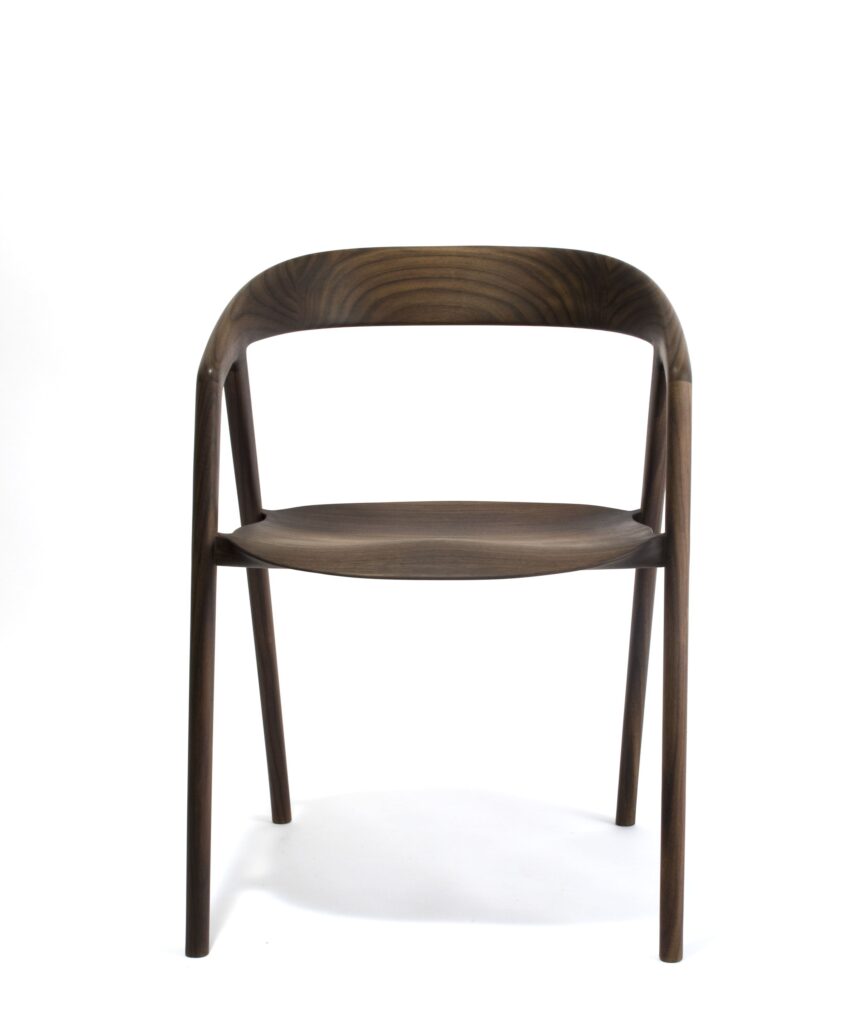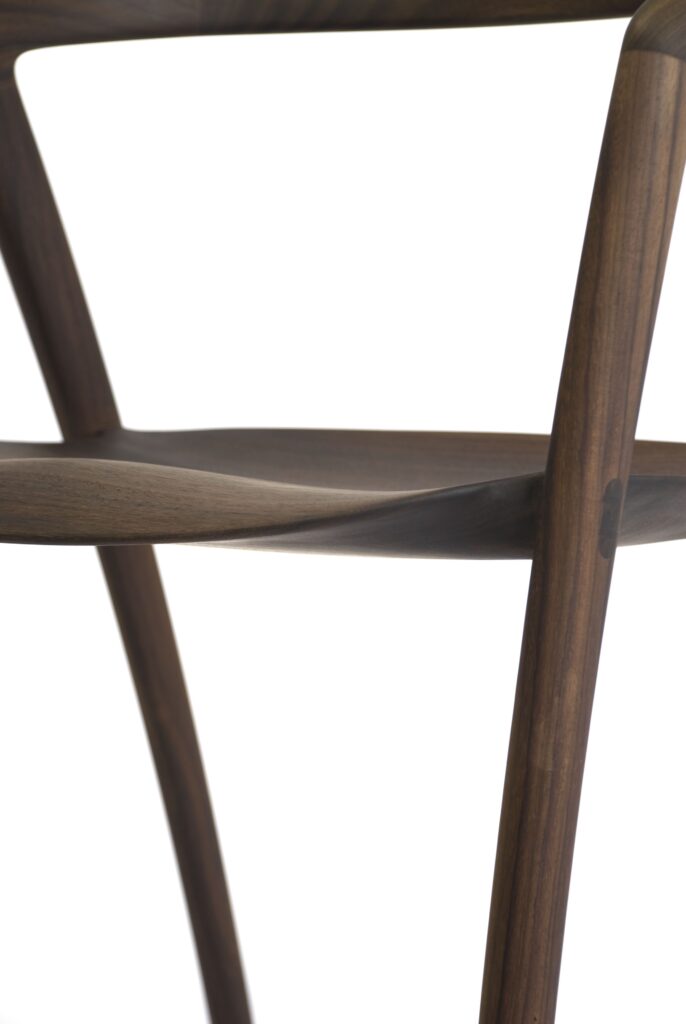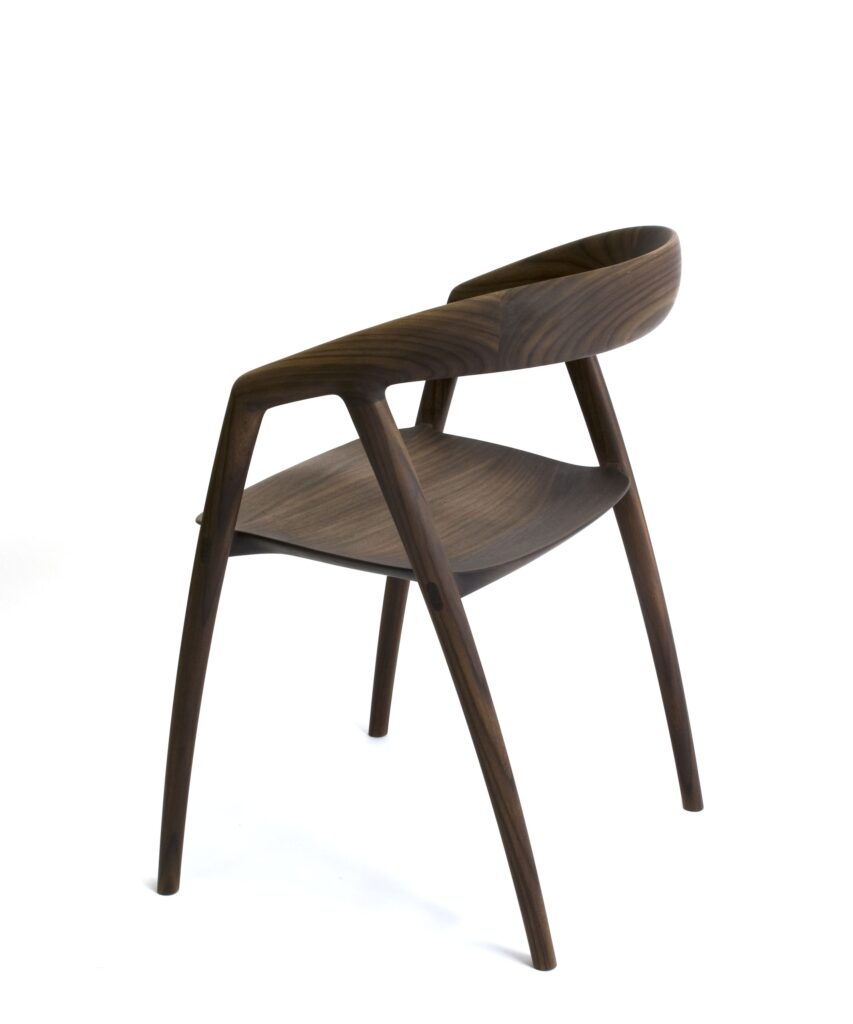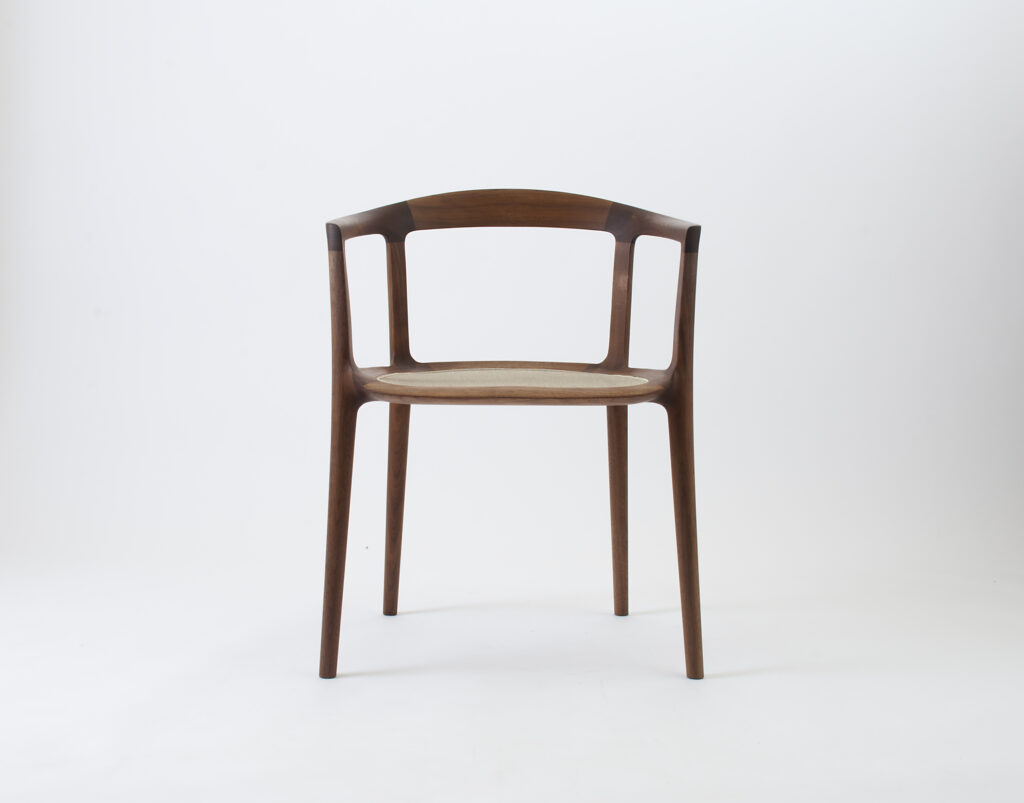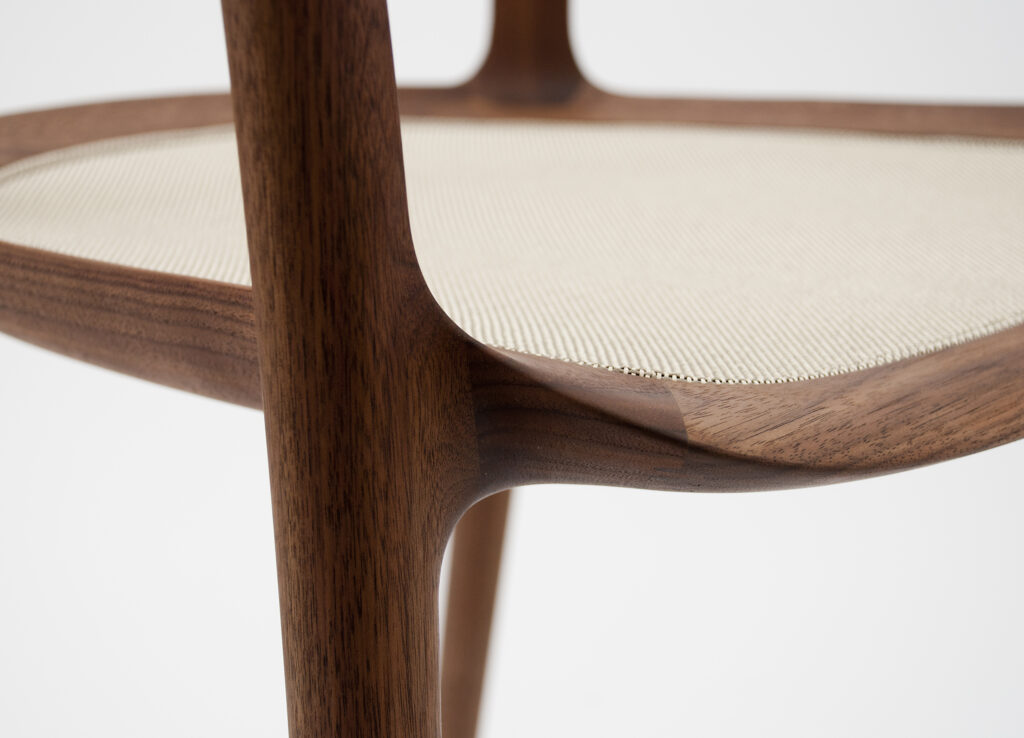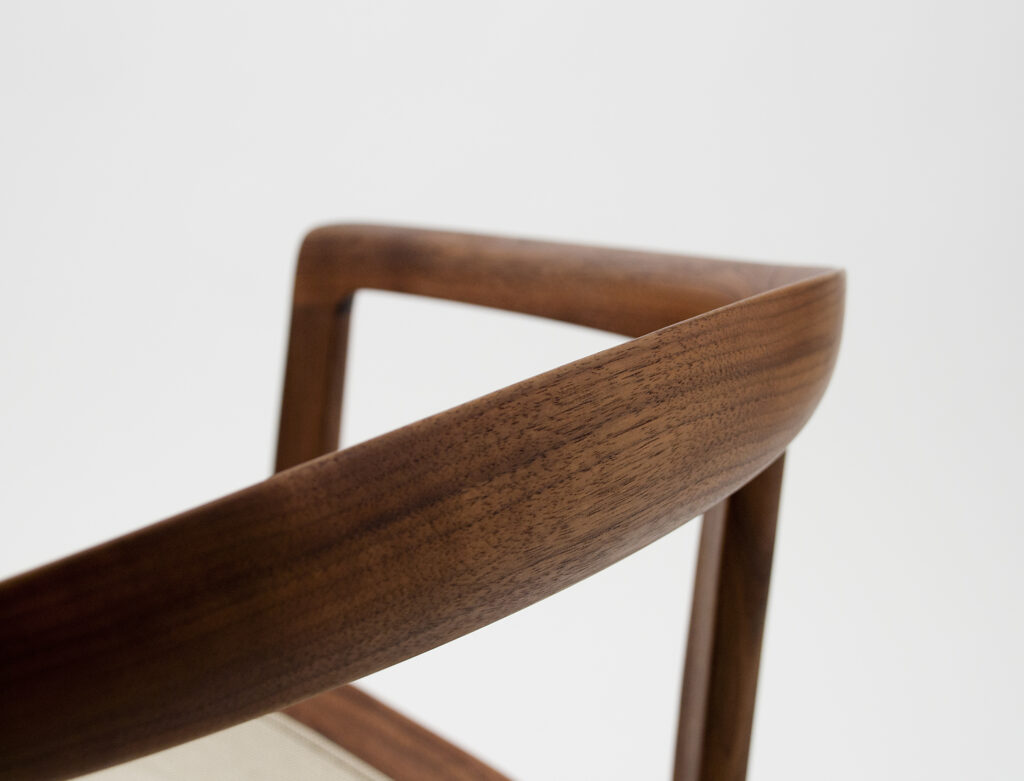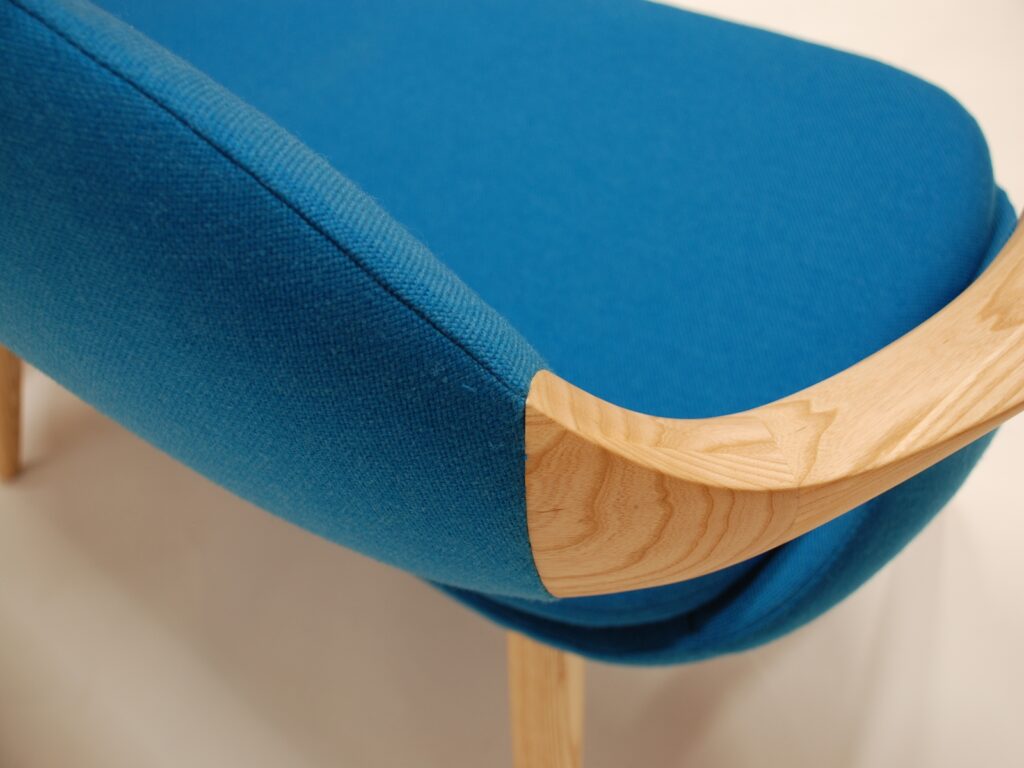デンマークと日本のデザインデュオ ‐猪田恭子とニルス・スヴェイェが家具デザインのインスピレーション、影響力、パートナーシップについて語る
「The architect and design duo」は2000年にINODA + SVEJEを設立。2013年には、ミラノにスタジオを備えた家具ショールームを開設しました。彼らの製造パートナーの中には日本の宮崎椅子製作所があります。 パートナーシップは、伝統的な家具製作者として、また現代のCNC(コンピュータ数値制御)を利用した木工ができる人を見つけたいという願望から始まりました。
この度、駐日デンマーク王国大使館は、INODA + SVEJEのパートナーシップ、デザインの影響、メーカーとの協力関係、デンマークと日本のデザインが組み合わさった絡み合ったデザインの特徴などについてインタビューすることができました。
お二人は、どのようにして出会いましたか?
Inoda & Sveje: 私達は、デザイナーとして独立し、それぞれのキャリアをスタートさせた頃、ミラノで出会いました。デザインプロセスに近代的なテクノロジーを織り交ぜる仕法について共通の興味を抱いていることに共感しました。それとともに、公私ともに付き合うようになりました。共同で事務所をデンマークのコペンハーゲンで設立しましたが、その後、またミラノに戻ってきました。
それぞれの能力をどのように補い合っていますか?
Inoda & Sveje: 私達にとって、あらゆる価値観が決定されいている訳ではなく、余地を持たせる事を重要に考えています。なので、私達のルールは、文化的背景や好み、能力に関係なく、両方が納得しなければ、デザインは完成しないというものでした。
私達は、けっこう似た能力を持ち合わせいて、お互いの役割に明確な境界線はありませんが、奇妙なことに、同じ理由を持ち合わせることなく、同じ結果を引き出すことがよくあります。
デンマークのデザインと日本のデザインの関係についてどう思われい説明しますか?
Inoda & Sveje: 私達は、木材を使用した人間工学に重点をおいた伝統的なデンマークの家具デザインと、卓越した日本の職人の仕事に触発されています。
今日、木材はもはや家具の唯一の構築材料ではなく、最も安価で最強の強度を持つわけでもありません。木材は、自然の美しさや触覚の豊かさなどの特性を感じる事が出来る特別な素材になっています。なので、50年代との大きな違いは、今日、私達は自然と、そこに適用される職人技を尊重し、木材を贅沢な素材として扱っていることです。
デンマーク人と日本人からなる2人組のデザイナーですが、なぜミラノに事務所を構えているのでしょうか?
Inoda & Sveje: たぶん、色んな可能性はあったでしょう。ただ、私達はミラノで勉強していた、あるいは働いていたので、そこが私達のベースでした。私達は、イタリアを非常に楽しんでいます、その中には、もちろん食事やワインも含まれます。イタリアには、信じられないほど優秀な職人の伝統もありますし、「メイド・イン・イタリー」の名声は主に彼らのスキルによるものです。その成功には、ほとんど彼らはフォーカスされることは有りませんでしたが。
さらに、ミラノは、グローバルな視点でのデザインイノベーションの中心地でもあります。
お二人方の事務所とその仕事の在り方について最も特徴的な点は何ですか?
Inoda & Sveje: 私達の方法論は、大量生産の技術機器のコンサルタントとしての初期の経験から、その方法を木製家具の分野に適用しました。
私達は美学を設計プロセスの重要な要素だとは見なしていませんが、結果としては、非常に重要です。
製造に適したデザインが、主軸になります。私達は、クライアントがどの過程で優れているのかを調べます。すべてのクライアントは、他の誰よりもはるかに優れている部分を持っています。それを念頭において、社内の進化につながる一部となるようにデザインをしています。
お二人あなたお二人方のデザインスタイルは、どのようなものから触発や影響を受けていますか?
Inoda & Sveje: 私達は、何よりもまず、クライアントからインスピレーションを得ています。プロジェクトを完成させる為の実際のデザイン(フォームやライン)には、私達の周りにある自然界から取り入れています。それは、自然界のオブジェクトの複製としてではなく、より類似した価値観として。自然の法則は文化や伝統に関係なく、私達のDNAに刻印された言語のようなものです。私達皆が、飛んでいるボールの曲がり曲線を想定でき、ボールを捕らえることができます。植物や動物の形を認識することができたり、それらの想定できる自然界のライン、フォームが私達の家具の中に取り入れられていることが、私達の家具のサインになるようにしています。
日本の製造会社をどのように見つけ、関係性はどのように発展しましか?
Inoda & Sveje: 恭子が、宮崎椅子製作所が伝統的な家具製作メーカーであり、最新のCNCを使っているのを見つけました。
当時、私達はこの2つの能力を組み合わせて現代的な家具を作るという大まかなコンセプトを持っていました。幸い、社長であり家具職人である宮崎氏は、そのコンセプトを気に入ってくれました。この分野での通常のアプローチは、精度やコストのメリットの為に製造を手仕事から機械生産に移すか、または、独創性の為に100%手作業のままにするか。かれも、それを課題と見なしたと思います。
そして、手か機械でしか作れないディテールが沢山あるので、開発は品質も可能性を失うものだと思えました。
私達が望んでいたのは、2つの世界の長所を組み合わせて、熟練した職人のスキルと最先端のツールなしでは実現できない家具を作る事でした。
前回のインタビューでお二人は、メーカーそれぞれに向けて特別にデザインしているとありましたが、メーカー各々は、お二人あなた方のデザインプロセスをどのように変えますか?
Inoda & Sveje: 前述の回答にもありますが、私達は、製造方法を変更したいとは思いません。むしろ、彼らがすでに得意とすることを、もっと活用できるように、既存の商品には用いられていない、極端な専門分野を持っているものもあります。それぞれの独自性をみつけて、それを主軸の魅力として紹介したいと思っています。
日本のパートナーの工芸品に対するアプローチはヨーロッパの生産者とどのように異なりますか?
Inoda & Sveje: 日本の生産者が開発を完了するまでに何年もあるプロジェクトに取り組むとき、これは非常に心強いことです。
正直なところ、私達が、宮崎椅子製作所のような日本のパートナーに恵まれたことは、おそらく信じられないくらい幸運なことでした。
工業デザインとエンジニアリングは、家具にどのように影響しますか?
Inoda & Sveje: 私達の作業方法は、ヘルスケアのコンサルタントとして働いている間の産業用ハイテク製品の開発から派生していますが、現在、仕様には、多くの非技術的および定量化できない値が同等の条件で含まれています。
一般的にエンジニアリングとデザインは相互に影響し合う関係であり、それらを区別するべきではありません。
なぜ、これほど多くのデンマークのデザイン家具が日本で生産されているのだと思われますか?
Inoda & Sveje: デンマーク家具のデザインは、他の場所では時代遅れになったとしても、日本では高く評価されてきました。市場の近くで生産することが理にかなっています。
一般的に日本には、非常に熟練した工芸品があり、特に高い効率と品質を備えているため、ハイエンドの家具市場で費用対効果の高い選択肢となっています。
あなた方の家具をどこで体験できますか?
Inoda& Sveje: 六本木ヒルズ森タワー52階 レストラン“The Sun & The Moon”
DC09チェア(宮崎椅子製作所)
ドバイ ブルガリホテル&リゾート 日本食レストランVIPルーム”Hoseki”
DC10チェア(宮崎椅子製作所)
オランダ・アムステルダム ホテル”Ambassade Hotel”
DC10チェア(宮崎椅子製作所)
イタリア・ミラノ 私達のギャラリー, “INODA+SVEJE gallery
私達による全ての家具
宮崎椅子製作所の取扱店https://www.miyazakiisu.co.jp/shop/map.html
カリモク家具・ショールーム
KUNST BY KARIMOKU(カリモク家具、KUNSTコレクション)
日本・京都 ARIA店
ファントムハンズ(インドのメーカーとの家具)
Kyoko Inoda and Nils Sveje on their design inspiration, influences and partnership
Kyoko Inoda and Nils Sveje on their furniture design inspiration, influences and partnership.
The architect and design duo founded INODA+SVEJE in 2000 and opened up their furniture showroom on-site with a studio in Milan in 2013. Notably amongst their manufacturing partners is the Miyazaki Chair Factory in Japan. The partnership initiated from a desire to find someone capable of woodworking as a traditional furniture builder and with modern CNC.
The Royal Danish Embassy in Japan has had the pleasure of interviewing INODA+SVEJE on their partnership, design influences, working relationship to manufacturers and the intertwined design characteristics of Danish and Japanese design.
How did your partnership begin?
Inoda & Sveje: We met in Milano just after we both had started our professional career and found a common interest in applying modern technology to the design process. We quite fast became partners in life and felt it was a matter of course we also partnered for work. We lived in Denmark for a short period working on our first projects before returning to Milano.
How do your respective competencies complement each other?
Inoda & Sveje: It is important for us to give room for non-quantifiable parameters, so our first rule was that regardless of cultural background, taste, or competences, a design is not finished unless we both can approve of it.
We are quite similar regarding competences and do not work with clear borders regarding responsibilities, strangely we have found that while we often approve of the same results it is not always founded in the same reasoning.
How would you describe the relationship between your Danish design and Japanese design?
Inoda & Sveje: We are both inspired by the traditional Danish furniture design for its use of wood as a material and emphasis on ergonomics, as we are for the Japanese heritage of artisan excellence. Today wood is no more the only building material for furniture nor is it the cheapest and strongest, wood has become an exclusive material chosen for its properties such as natural beauty and tactile richness. Therefore, a big difference from the 50s is that today we treat wood as a material of luxury because we respect the nature and the craftsmanship applied in using it. We do not as such make a point out of differentiating the origin of some design in Japanese and Danish.
As a Danish/Japanese design duo, why is your studio placed in Milan?
Inoda & Sveje: We think it could be anywhere, but we started in Milano, so it is our common ground, and we do enjoy Italy a lot, scenery, food and wine. Italy also has a tradition for incredibly good craftsmen, although the fame of “made in Italy” was mostly due to their skills they were never in the centre of the success and has mostly been bypassed afterwards. Furthermore, Milano is a centre for Design innovation from a global perspective.
What is most distinct about your studio and the work that you do?
Inoda & Sveje: Our methodology; From our early experience as consultants for mass-produced technological equipment, we took the methods and applied them to the field of wooden furniture, meaning we do not see aesthetics as a leading parameter in the design process, but very much so in the result. Design for manufacturing is the main influence. We study our clients to find out what processes they excel in, all of them has some details they just do much better than everybody else, then we design with that in mind trying to be part of an evolutionary process within the company.
What is your design style inspired and influenced by?
Inoda & Sveje: As per the above question, our clients foremost inspire us, the actual aesthetics we use to complete the projects is taken from the nature around us, not as a reproduction of objects in nature but more a similar use of values. The reason is that the natural laws are like a language imprinted in our DNA no matter culture or tradition, we all can recognize the bend curve of a ball flying and catch it, the shapes of things and animals create a language of form and our efforts is to speak the language through our furniture.
How did you find your Japanese producer and how did your partnership evolve?
Inoda & Sveje: Kyoko found Miyazaki looking for someone capable of woodworking as a traditional furniture builder and with modern CNC. At the time, we had an unrefined concept of mixture these competences to be able to make contemporary furniture, fortunately, Miyazaki liked the concept. We like to think he also saw it as a challenge, as the normal approach in the field was to move manufacturing from hand to machine for precision or cost benefits or stay with 100% handcraft for originality.
But as there are only so many details you can make either by hand or machine, we saw that development as a loss of quality possibilities. What we wanted was to combine the best of two worlds and make furniture which could not be achieved without the skills of a master craftsman and the most advanced tools.
In a previous interview, you mentioned that you design specifically for different manufactures, so how do different manufactures change the designs process for you?
Inoda & Sveje: As per the answer in question 5, we do not want to change the manufacture, rather we seek to excel in what they already do so well. Some have areas of extreme expertise which they do not even show in their existing products, we want to find the uniqueness of each and present it as the main attraction.
How is your Japanese partner’s approach to their craft different from European producers?
Inoda & Sveje: If Japanese producers start a process they will also finish it, this is very reassuring to know when working on projects that sometimes take years to finish.
Honestly, we have probably been incredibly lucky with our Japanese partners, Producers like Miyazaki are truly extraordinary in our field.
How do industrial design and engineering play a part in your furniture?
Inoda & Sveje: Our work methodology is derived from the development of industrial high tech products while working as consultants for healthcare, but we now include many non-technical and non-quantifiable values in the specification on equal terms. Generally, engineering and designing interconnect and we see no reason to differentiate between them.
Why are so many Danish design furniture’s produced in Japan?
Inoda & Sveje: Danish furniture design has been highly valued in Japan even when it went out of fashion elsewhere, so for some, it made sense to produce close to the market. Generally, Japan also has very skilful artisans, with skills characterised by exceptionally high efficiency and quality; this makes it a cost-effective choice in the high-end furniture market.
Question: Would you share examples of where your furniture can be seen and experienced?
Inoda & Sveje:
Tokyo, restaurant “The Sun & The Moon”, Roppongi Hills Mori Tower 52F, DC09 dining chair.
Dubai, restaurant “Hoseki” Jumeirah Bay Island, United Arab Emirates, DC10 dining chair.
Amsterdam, “Ambassade Hotel”, Herengracht 341, Netherlands, DC10 dining chair.
Milano, “INODA+SVEJE gallery”, via Ciovasso 11, Italy, all products
Japan, Miyazaki list of shops: https://www.miyazakiisu.co.jp/shop/map.html
Japan, KUNST by Karimoku showrooms: https://www.karimoku.co.jp/index.cgi?mode=shop_check_showroom
Japan, Phantom Hands, Aria Kyoto, Japan, 〒606-8277 Kyoto, Sakyo Ward, Kitashirakawa Donomaecho, 46−2, https://store.aria-kyoto.jp/

